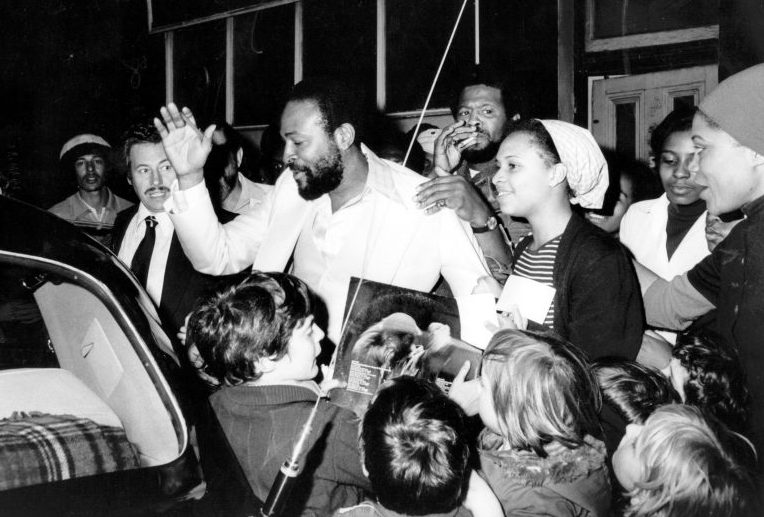
Getty 1st October 1976: American soul singer Marvin Gaye (1939 - 1984) visits the Mangrove Cafe in All Saint's Road, London.
Marvin Gaye was a superstar, simply put. He was a soul singer, songwriter and consummate performer, his presence onstage electrifying fans around the world. Before he died, he was a living legend, with hits like “I Heard It Through The Grapevine,” “Sexual Healing,” “Let’s Get It On,” “What’s Going On” and countless others.
Gaye was killed on April 1, 1984, the eve of his 45th birthday. He was shot to death by his own father, the Reverend Marvin Pentz Gay, Sr. Reverend Gay shot his son to death during an argument at their Los Angeles mansion.
Here is a brief look at the life and death of Marvin Gaye.
1. Marvin Gaye Was Born Marvin Pentz Gay, Jr. on April 2, 1939 in Washington DC
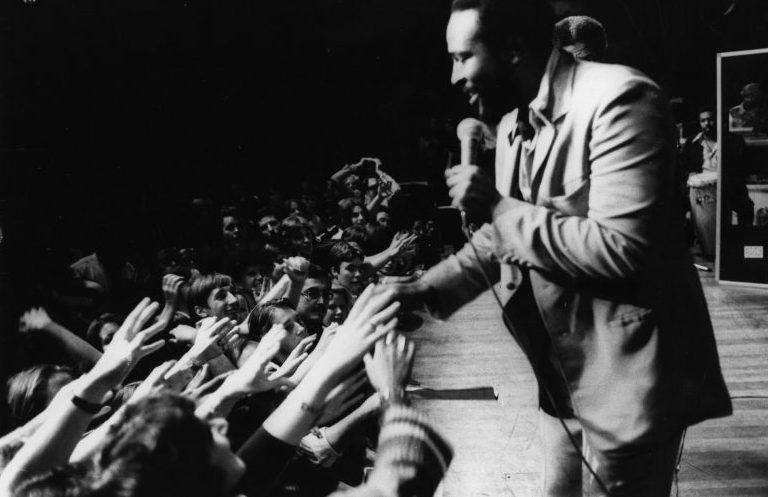
Getty29th September 1976: Soul singer Marvin Gaye (1939 – 1984) in concert at the Royal Albert Hall.
Marvin Gaye was born Marvin Pentz Gay, Jr. on April 2, 1939, in Washington, D.C., to the Reverend Marvin Pentz Gay Sr., and Alberta Gay. The Gay family lived in a public housing project in one of D.C.’s oldest neighborhoods. The area was very poor, full of once-elegant homes that were now in disrepair. The majority of the buildings in the neighborhood lacked electricity and running water.
Gaye had one brother, Frankie, and two sisters, Jeanne and Zeola. He also had two half-brothers, Michael and Antwaun. The Gay family was heavily involved in the Pentecostal church, where Gaye’s father was a reverend. When Gaye was just four years old, he began to sing at church, sometimes accompanied by Reverend Gay on the piano.
Despite this touching image of a father and son bonding over church hymns, according to Gaye, things at home were much different. Gaye likened his father to a tyrant, prone to violence and extremely cruel. He said that he was beaten often by his father, claims which were later corroborated by his sister, who said that the beating began when Gaye was a small child and continued until he was a teenager.
The neglect, cruelty and abuse Gaye suffered at the hands of his father was so severe that he often considered (and might have even attempted) suicide were it not for his mother’s love and support. As Gaye grew older, his relationship with his father deteriorated even further. When Gaye became a teenager, Reverend Gay would frequently kick him out of the house and leave him to fend for himself on the streets. He found solace in music, and joined up with a few local doo-wop groups, providing vocals. At age 17, Gaye dropped out of high school and joined the Air Force.
Gaye was unhappy while in the Air Force, and decided to fake mental illness so that he could be discharged. He returned home and focused on his true passion; music.
2. Gaye Began Exploring a Musical Career & Joined a Band Called The Marquees, Followed By The New Moonglows
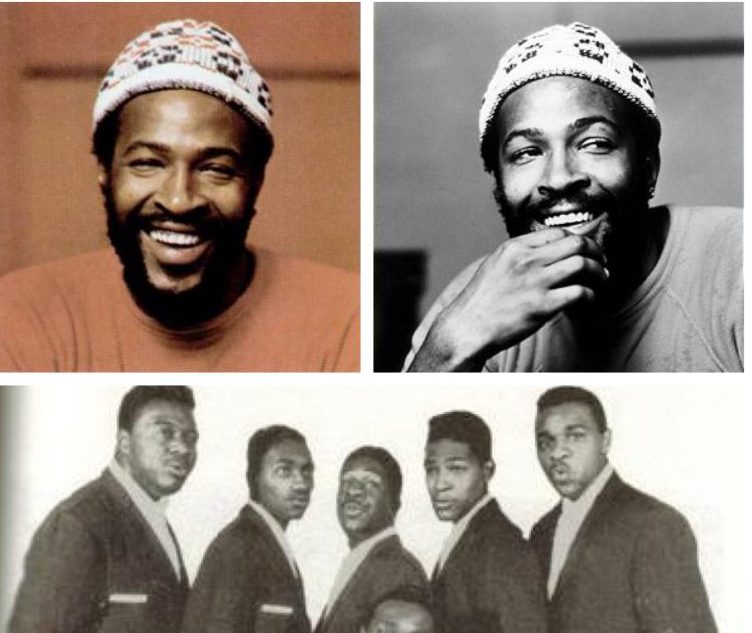
WikipediaMarvin Gaye, individually & with his former band
In the late 50s, after Gaye was discharged from the Air Force, he returned to D.C. and joined up with some of his friends in the music scene. They formed a group known as the Marquees and soon began working with the legendary Bo Diddley, who helped the Marquees to land their first record deal. At this time, Gaye started writing his own music.
Around 1960, the Marquees disbanded and Gaye decided to try his luck in Detroit, where the Motown scene was flourishing. He was signed to a new record label and saw this as a fresh start to his career. Gaye was teased relentlessly during his childhood about his surname, and the teasing started up again during his time in Detroit. He was hounded with childish jokes about his last name; constantly being asked “is Marvin Gay?” Annoyed, and looking to distance himself from his tyrannical father, he added an “e” to his last name, and from then on would be known as Marvin Gaye. In 1961, Gaye’s first single was released, “Let Your Conscience Be Your Guide.” People were beginning to take notice of Marvin Gaye.
3. Gaye Soon Found Massive Success

WikipediaMarvin Gaye albums
Gaye continued to co-write music as well as pen his own hits while in Detroit. His first top 10 single was 1963’s “Pride and Joy.” Gaye soon embarked on his first of several tours across the United States, getting to perform at several legendary venues, including the Apollo Theater. Gaye continued to churn out hit after hit, reaching the top 10 on the billboard charts and gaining a massive fan base around the world, along with the incredible fame and wealth that goes along with it.
Finally, in 1968, Gaye would reach No. 1 on the Billboard Hot 100 with “I Heard It Through The Grapevine,” selling over four million copies. Gaye wrote the song about troubles he was having in his marriage.
In 1970, Gaye wrote and recorded “What’s Going On” which was reportedly inspired by an act of police brutality witnessed at an anti-war rally in Berkeley by a friend of his. Gaye received pushback from the record company; the song was deemed “too political.” As a result, Gaye went on strike until the song was released. Finally, it was released in 1971, and it reached No. 1 on the charts and stayed there for over a month. Worldwide, “What’s Going On?” sold over two million copies.
In 1972, Gaye, his wife and son left Detroit and settled in Los Angeles. At this point, Gaye had full creative control over his career, and he released “Let’s Get It On.” The album, and title track, was considered quite controversial due to its raw sensuality and sexually charged lyrics. The album was a massive success, selling over three million copies and soaring to the top of the charts.
Later in the 70s, Gaye would embark on his first European tour. He would continue to find great commercial success, but he was about to face some major struggles in his personal life.
4. Gaye Went Through a Difficult Time Including Drug Addiction, Divorce & Financial Troubles
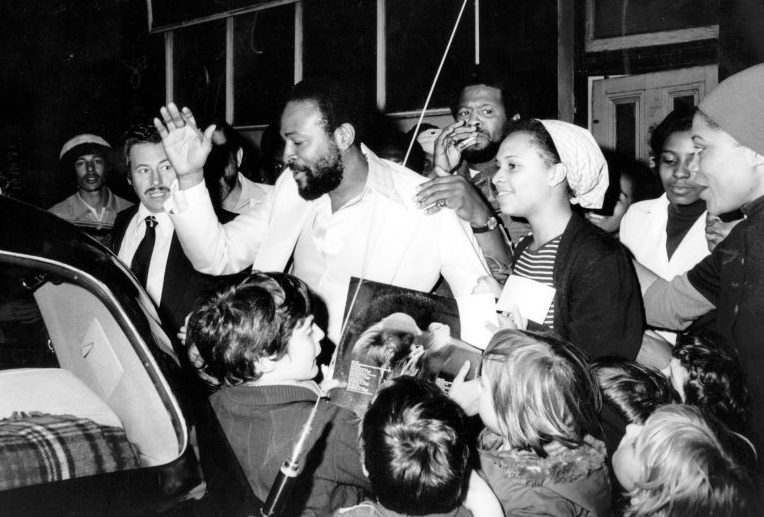
Getty1st October 1976: American soul singer Marvin Gaye (1939 – 1984) visits the Mangrove Cafe in All Saint’s Road, London.
Gaye recorded and released “Here, My Dear” in late 1978 written about the breakdown of his first marriage. Gaye had planned on using the royalties from “Here, My Dear” to give his ex-wife alimony payments. Unfortunately, the album performed poorly on the charts and was not lucrative at all.
Around the same time, Gaye developed a severe addiction to cocaine, which was a huge drain on his health, finances and personal life. Gaye recorded a disco album which by and large was a flop. He embarked on another European tour in 1980 in a self-imposed exile. Gaye was reportedly facing potential imprisonment for failure to pay back taxes of over $4 million.
While in London, Gaye began working on a new album, when a demo tape was stolen from one of Gaye’s studio musicians. This led to more turmoil for Gaye, thinking that the theft had been elaborately planned by Motown’s executives. With tensions between Gaye and the record company at an all-time high, thanks to the hard work of his personal attorney, Gaye was finally able to get out of his contract with the company. He also began attending a local church which helped him to regain his confidence. Additionally, he was able to get his drug addiction under control, and began to take better care of his health.
5. Gaye Was Shot To Death By His Own Father, Police Say
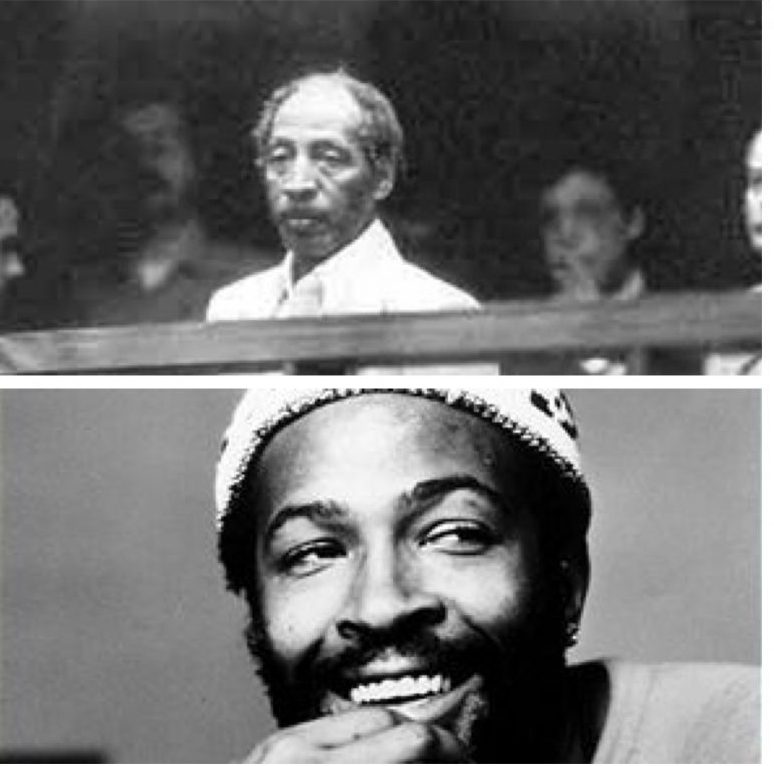
WikipediaThe Rev. Marvin Gay, Marvin Gaye
In the early 80s, Gaye returned home to the Los Angeles mansion he shared with his parents. Detectives say, on April 1, 1984, his parents were involved in a heated argument that escalated about insurance money. Police say that Gaye intervened when the fight became violent.
Gaye’s father, the Reverend Marvin Gay, Sr. was convicted of shooting Gaye in the shoulder and in the heart. The shot to the heart proved to be fatal. Gaye was rushed to the hospital where he was pronounced dead on arrival. Gaye died the day before his 45th birthday.
Gaye’s body was cremated and his ashes were later scattered into the Pacific Ocean. Reverend Gay was charged with first-degree murder. However, it was subsequently discovered that Reverend Gay had a brain tumor. His charges were reduced to voluntary manslaughter. He received a six year suspended sentence and died four years later at a nursing home in 1988.
Gaye was posthumously honored with the Grammy Lifetime Achievement Award, the Rhythm and Blues Music Hall of Fame, the Songwriters Hall of Fame and the Rock and Roll Hall of Fame.